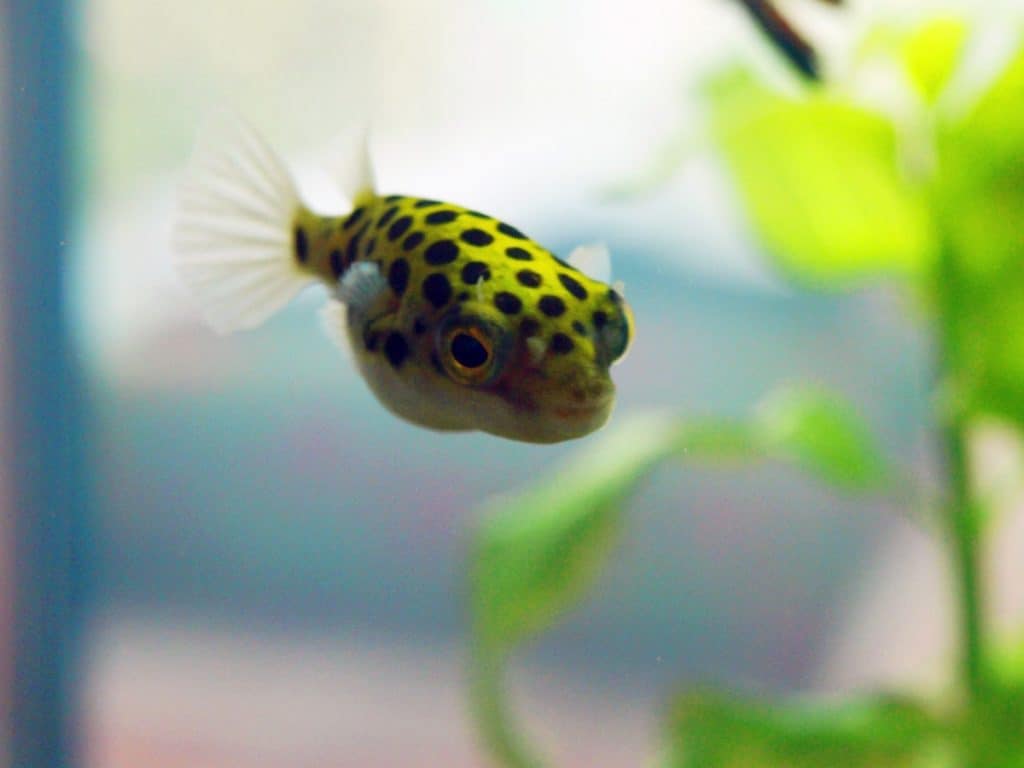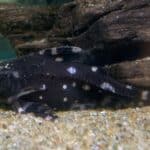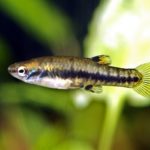Are you bored with common fish that you have seen thousands of times in everyone’s tank? Well, the Green Spotted Puffer might be the solution!

Species Summary
Green Spotted Puffers (Tetraodon nigroviridis) are a difficult species to find in aquarium shops as they are almost always wild-caught. They can be found in freshwater streams and rivers; however, they mostly inhabit the brackish mangrove (or even marine) ecosystems of Southeast Asia, especially countries like India, Sri Lanka, Myanmar, Thailand and Vietnam.
Green Spotted Puffers need to be kept in brackish (or marine) water to ensure long-term healthy growth. On the contrary, if kept in freshwater, they would both grow half their normal size and get sick very often, leading to premature death.
Care Guide
Tank Size
Green Spotted Puffers usually need to be kept alone, as most of the specimens are aggressive both to conspecifics and other fish. A 30-gallon tank is a minimum requirement. These species like to roam around the tank horizontally, so a tank with a greater length dimension would be a perfect choice.
Tank Mates
Green Spotted Puffers are usually mildly aggressive fish species. However, it would be possible to find peaceful specimens, but it cannot be assessed until the fish is introduced in the tank. You should not keep them in normal community aquariums because of their behaviour and specific requirements in terms of water parameters (brackish water).
Only a few species could cohabitate with this fish successfully, especially if kept in a very large tank (50 gallons or more). The first one is the Scatophagus, as they are a big and peaceful species that would not harm Green Spotted Puffer and, most importantly, it also lives in brackish waters. For the same reason, Archer Fish, Ariopsis and Mondactylus could be good choices.
Same Species Tanks
As mentioned earlier, the same species tank is the best solution for this fish. Juvenile Green Spotted Puffers could live in a same species tank, however, when they grow older, they start to be more aggressive towards members of the same species.
Water Parameters
Here comes the tricky part. As wild-caught fish, they need a tank where their natural water conditions are met. This increases the difficulty of keeping these fish, as they live in brackish (or even marine) water. The water salinity should be around 1.015. The pH level of the water should be between 7.0 and 8.3, and the water hardness between 9 and 19 GH. The temperature should be kept between 75 and 82 degrees.
Pollutants should be kept as low as possible, as these fish are sensitive to bad water conditions because of the absence of scales on their skin.
What to Put in Their Tank
In nature, they live in mangrove habitats full of woods and plants. Recreating their natural habitat is really important to prevent stress.
The substrate should be dark sand on gravel. Dark substrate prevents light reflections and reduces fish stress. Floating plants are really important, as Green Spotted Puffers prefer low lighting conditions.
You should use a lot of plants (they could nip some leaves) and woods to recreate a natural river bottom scape. You should also leave room for fish to swim around so don’t exaggerate!
Many plant species could adapt to brackish water, here is a list of the most common ones:
- Anubias
- Microsorum
- Egeria
- Cryptocoryne
- Java Moss
- Bacopa
- Ceratophyllum
- Riccia Fluitans
To recreate the brownish water colour you should use Catappa leaves on the bottom. These will both release tannins in the water column, and further improve the natural look of the tank.
Common Diseases
Green Spotted Puffers are very sensitive to pollutants. Because of this, their biggest enemies are ammonia, nitrites and nitrates. A solid water change schedule is essential to provide the best environment to live in.
You should perform regular water checks to ensure that the tank is at the correct temperature, PH level, nitrate level, and salinity, to help avoid disease. Remember that a complete diet can also help to prevent diseases in general.
Food and Diet
Green Spotted Puffers have a mostly carnivorous diet. In nature, they eat invertebrates, crustaceans and molluscs, and these are the foods you should feed them in the tank.
Puffers have no real teeth but have a beak-like mouthpart, formed by the fusion of two tooth-like structures on each jaw (hence Tetraodon, meaning four teeth) which are used to crush shelled invertebrates. The beak, or the teeth if you prefer, continuously grow at an amazing speed, so regular meals consisting of shelled invertebrates, such as snails, small crab claws, clams, etc., must be offered to try to keep them at a reasonable length.
Remember that a varied diet would result in better coloration and activity. You could integrate their diet with live or frozen food such as Chironomus, larvae, and daphnia. Pellets could be also used but only as a minor component of the diet.
Lifespan
Green Spotted Puffers can live up to 20 years in an aquarium. However, a lot depends on the water conditions and diet. A clean tank, together with a complete diet will increase their lifespan considerably.
Brackish water kept Puffers usually have double the life expectancy of freshwater kept ones. Hence, if kept in freshwater, Green Spotted Puffers usually live only up to 6-8 years.
Appearance
Green Spotted Puffers have a stunning light green coloration on their body that unfortunately starts to darken with their growth. When fully adult, their color turns to a darker and greyer one.
Size
Green Spotted Puffer is a medium-sized puffer that can grow up to 7 inches long.
Behaviour and Temperament
Green Spotted Puffers are mildly aggressive fish, especially with specimens. They become more aggressive when older.
They are fin nippers, so be aware of that, especially If you keep them in a community tank (a choice that we do not recommend)!
Breeding
Although it is not easy, this species has been successfully reproduced in the aquarium. Green Spotted Puffers only breed in brackish water. Flat stones should be provided as potential breeding sites. The eggs are laid directly on the substrate or on a flat rock and are guarded by the male. They hatch in about seven days, and then fries are moved to a previously dug pit in the substrate where they continue to be guarded by the male. Fries are very challenging to raise, as they appear to not accept most of the food. Cyclops seem to be the best choice.
Gender Differences: Male vs. Female
Green Spotted Puffers are impossible to sex from external traits.
Fun Facts
Green Spotted Puffers are able to make sounds by grinding the jaw/pharyngeal teeth or by vibrating the swim bladder.
They are also one of the few fish that can actually blink or close their eyes, which adds further charm to what is already a fish with a lot of character.
Many puffer body parts contain potentially deadly venom, and several species are among the most venomous vertebrates in the world. Their internal organs, particularly the liver and gonads, contain lethal amounts of a substance known as tetrodotoxin or saxitoxin, which in some cases can accumulate in the gonads during the breeding season, and depending on the species, geographic area and period of the year. The toxin is not produced by the fish themselves, but by symbiotic bacteria that inhabit the viscera. If ingested in sufficient quantities, it can cause paralysis and death. It is about 100 times more potent than potassium cyanide, ingestion of about 25 mg is enough to kill a 75 kg man, and there is currently no antidote. Grotesquely, the victim usually remains conscious while being paralyzed. Despite this, pufferfish is considered a delicacy in Japan, where it is known as fugu. It is prepared only by highly skilled chefs, and despite this every year some people have died after eating it.








